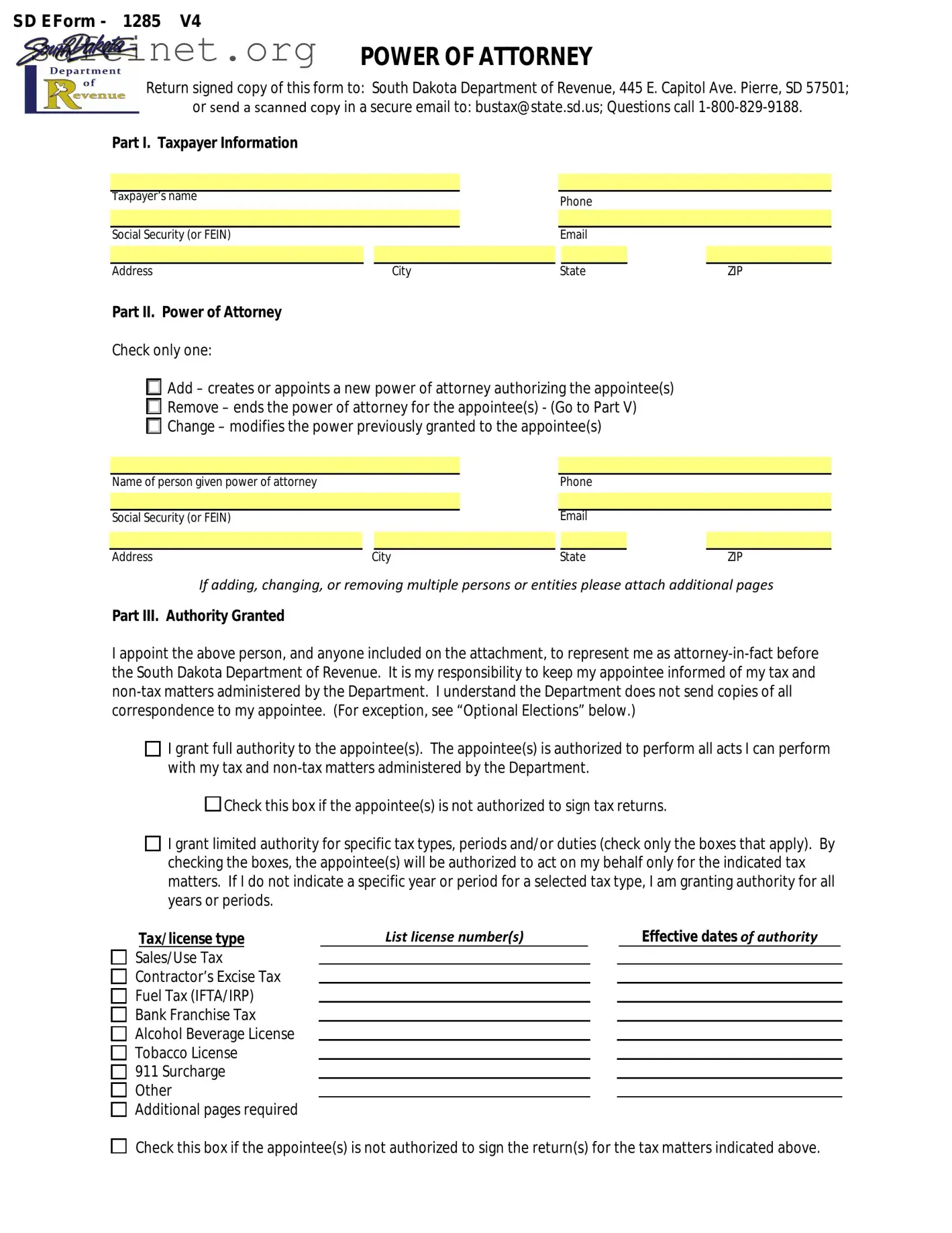The IRS Form 2848 is often compared to the Tax POA E1285V4 form, as both documents grant someone authority to represent a taxpayer before the IRS. By submitting Form 2848, a taxpayer designates an individual, such as an accountant or attorney, to handle their tax matters. It specifies the types of tax matters the representative can discuss or negotiate, ensuring that the taxpayer maintains control over their tax affairs while receiving assistance when needed.
Another similar document is Form 8821, which is known as the Tax Information Authorization. Unlike the Tax POA E1285V4, the 8821 form allows an appointee to obtain tax information on behalf of the taxpayer but does not grant them the authority to represent the taxpayer in dealings with the IRS. This makes it a good option for taxpayers who need someone to gather information without the complexity of full representation.
The California Form 540-POA is relevant for individuals filing state taxes in California. This document serves a similar purpose by allowing a person to act on behalf of the taxpayer for state tax matters as the Tax POA E1285V4 does for federal matters. It helps bridge the gap for individuals who need support with state-level compliance and issues.
In New York, the Form POA-1 serves a parallel function to the Tax POA E1285V4, granting authority to a representative to act on behalf of a taxpayer for New York State income tax purposes. The similarities lie in how both forms formalize the relationship between a taxpayer and their chosen representative, streamlining the process for handling tax affairs.
Form 56, also known as Notice Concerning Fiduciary Relationship, has similarities with the Tax POA E1285V4, especially for individuals who appoint a fiduciary. This form establishes a formal fiduciary relationship recognized by the IRS, allowing the fiduciary to manage tax matters on behalf of the taxpayer, similar to a power of attorney.
For businesses, the IRS Form 8821-B is designed to authorize third parties to receive tax information on behalf of business entities. While it parallels the Tax POA E1285V4 in terms of authorization, it is distinct in its focus on business-related tax matters. This allows companies to grant access to their tax records without giving full representation rights.
Furthermore, many states have their own version of a Power of Attorney specifically targeting tax issues, like Florida’s Form DR-835. This document allows taxpayers in Florida to appoint a representative to manage local tax matters. Its aim is consistent with the Tax POA E1285V4, as both facilitate communication and negotiation between taxpayers and tax authorities.
In Texas, the Form 01-117 serves a similar purpose. This statewide document allows individuals to designate a representative for handling state tax issues. It shares the general intent of the Tax POA E1285V4, ensuring that representatives can act on behalf of a taxpayer effectively, whether on the state or federal level.
Lastly, the Delegation of Authority form often used in corporate settings is akin to the Tax POA E1285V4. It allows executives to transfer their decision-making power to others for specific matters, including tax. Both documents empower others to act on behalf of the principal or taxpayer, whether for individual tax issues or broader organizational decisions.

